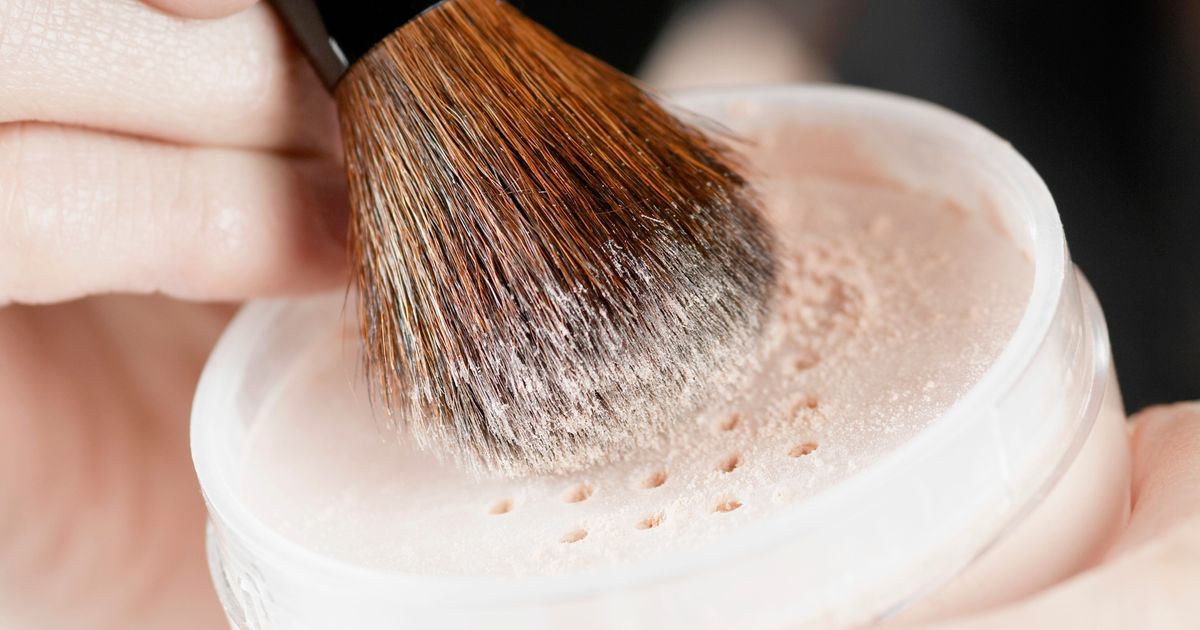Beauty products are often filled with unfamiliar and hard-to-pronounce ingredients. However, the rise of clean beauty has led to increased concern about potentially harmful chemicals like parabens, phthalates, and talc. The use of talc in makeup has especially come under scrutiny due to its potential connection to cancer-causing asbestos and other health issues, as explored in the HBO Max docuseries “Not So Pretty.”
Should you throw out your talc-containing products? According to dermatologist Dr. Aanand Geria, that’s a personal decision. Consumers should consider the potential risks and benefits based on their own circumstances and preferences.
So, what exactly are the risks and benefits of talc in makeup? Talc is a powdered substance made from naturally occurring minerals, and it’s commonly used in personal care and makeup products to absorb moisture and achieve a smooth texture. It’s chemically inert and odorless, making it a stable and safe option for cosmetics.
Talc offers a soft feel and matte look to makeup products. It helps absorb moisture, dilutes pigments, and makes formulations spreadable. Its affordability also makes it a popular ingredient for thickening products. However, some users may find talc to have a chalky finish and prefer alternatives.
The main concern with talc is its potential contamination with asbestos, a carcinogenic mineral. Inhaling or applying talc-containing asbestos can lead to serious health problems, including lung cancer and mesothelioma. The International Agency for Research on Cancer classifies talc as “possibly carcinogenic to humans.” Studies suggest that prolonged exposure to talc particles may increase the risk of lung disease or cancer.
There is ongoing research on the possible link between talc and ovarian cancer, particularly when talc-containing powders are used in the genital area. Some argue that talc-free products might also have carcinogenic effects. The safety of talc in baby powder has also been questioned, leading to Johnson & Johnson’s decision to discontinue talc-based baby powder due to consumer safety lawsuits.
Apart from potential long-term health risks, talc can cause skin irritation, especially in delicate areas. While talc itself may not be considered dangerous, its proximity to asbestos raises concerns.
Regulatory agencies like the FDA consider it unacceptable for cosmetic talc to be contaminated with asbestos, but they don’t regulate cosmetics beyond the approval of color additives. Asbestos detection is the responsibility of manufacturers. Trusted certifications from third-party organizations like the Leaping Bunny Program and the Environmental Working Group can help consumers identify transparent and safe products.
The FDA does test talc-containing cosmetic products for asbestos, and their 2022 sampling assignment found no asbestos in the 50 samples tested. However, it’s still important to use caution when using talc-based products, avoiding inhalation and contact with sensitive areas.
In summary, the decision to use talc-containing makeup is personal, and consumers should weigh the potential risks and benefits. Transparency from companies and third-party certifications can provide reassurance. While regulatory agencies have measures in place, it’s always best to exercise caution when it comes to talc-based products.
Denial of responsibility! VigourTimes is an automatic aggregator of Global media. In each content, the hyperlink to the primary source is specified. All trademarks belong to their rightful owners, and all materials to their authors. For any complaint, please reach us at – [email protected]. We will take necessary action within 24 hours.


